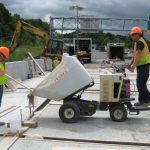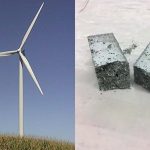Data-Driven Assessment of Post-Earthquake Bridge Functionality and Regional Mobility
|
Local, state, and federal engineers and emergency managers need reliable estimates of bridge performance after an earthquake so that they can plan pre-event mitigation, post-event response and mobility, and long-term recovery. This project provided improved predictions of the post-earthquake functionality of bridges in Western Washington following a Cascadia Subduction Zone magnitude-9.0 earthquake. ... Read More | |










